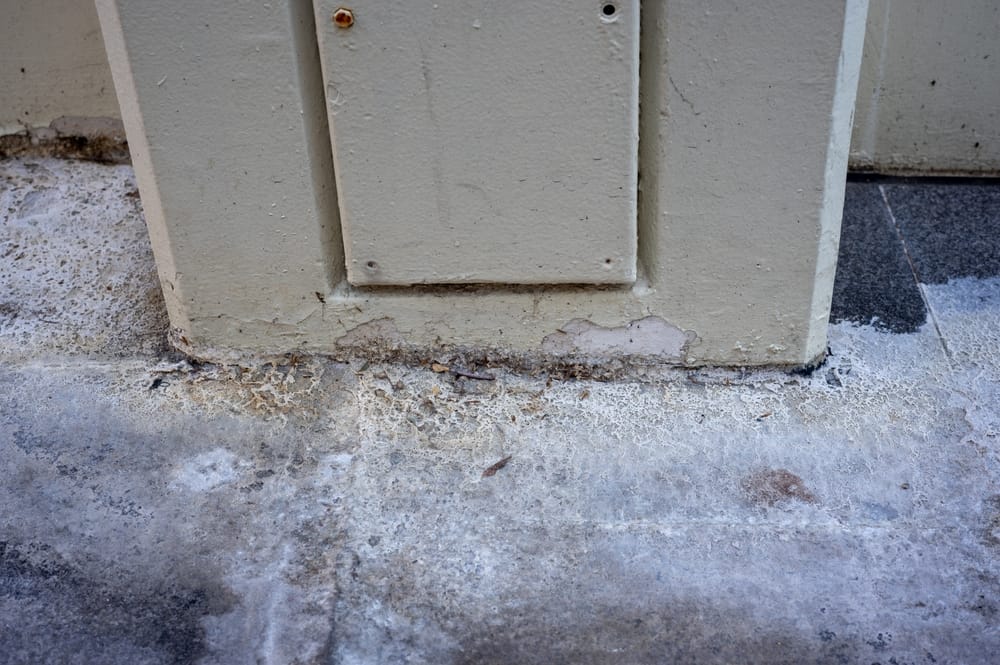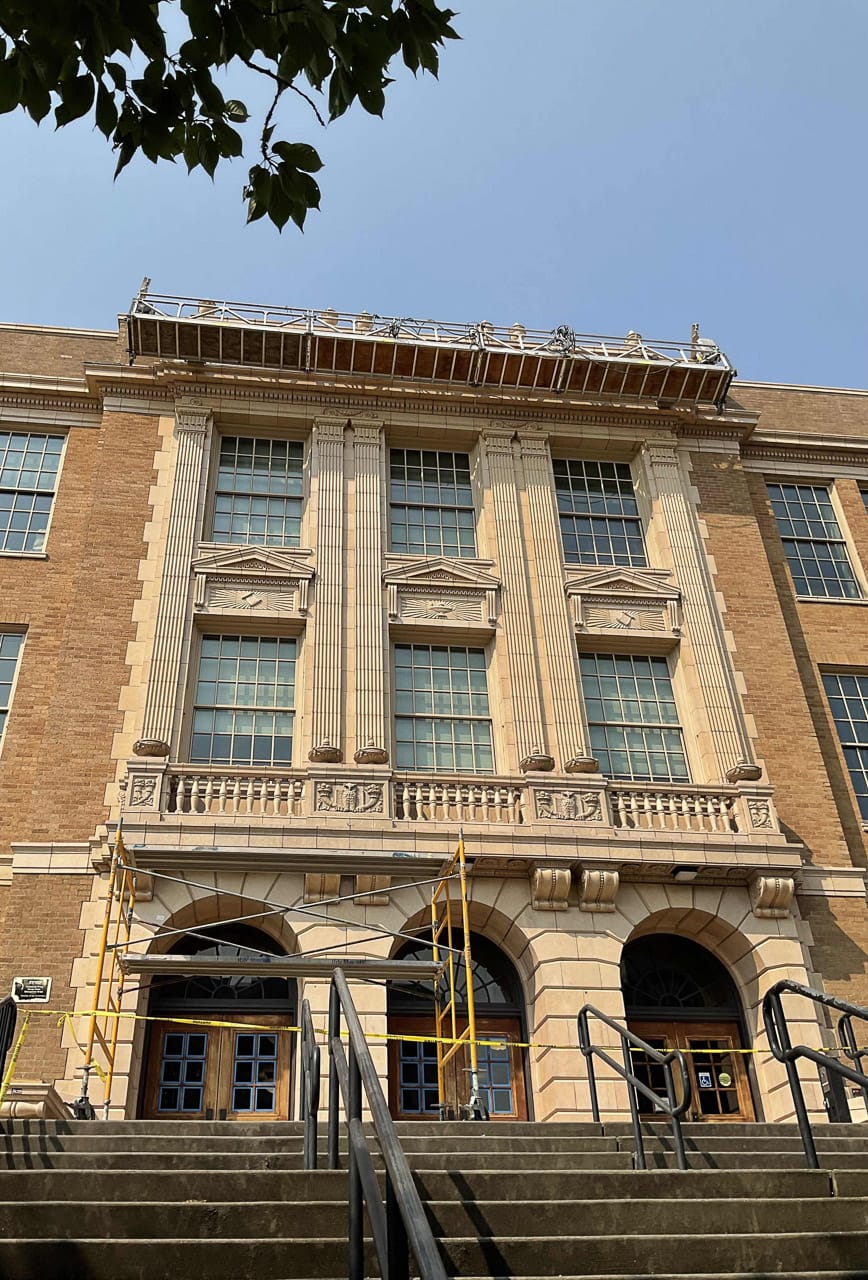Whether you own a home or building, you should become familiar with the term “efflorescence.” Put simply, efflorescence refers to a deposit of salts that can develop when there’s water in or on a surface. Since it can be detrimental to your structure and diminish its aesthetics, we’ve compiled a list of tips on how to prevent it.

What is Efflorescence?
First and foremost, let’s dive deeper into what efflorescence is and why it occurs. Often seen on brick, concrete, and pavers, it appears when water leaves behind salt deposits. It usually has a white or gray tint and may look like a powdery substance on walls and floors.If you ignore efflorescence, it can quickly spread and take a serious toll on your building. While it’s not inherently dangerous, it has the potential to cause moisture issues and structural damage. It may also make your building look older or unkempt.
Types of Efflorescence
In general, there are two types of efflorescence: primary efflorescence and secondary efflorescence. Primary efflorescence develops when a masonry structure is initially cured or manufactured. It may occur if too much water is added during the installation phase. Secondary efflorescence, on the other hand, forms after the concrete or masonry has been cured. It’s usually the result of water that comes from an external source and leeches salts to the surface.
Ways to Prevent Efflorescence
Fortunately, these tips can help reduce the risk of efflorescence and the problems that stem from it.
Choose the Proper Concrete
Not all types of concrete are created equal. To prevent efflorescence, use concrete with a low absorption rate. If your concrete has a higher absorption rate, you can expect to see efflorescence during the early spring for at least a few years.
Be Mindful of Storage
You may be surprised to learn that where you store your masonry materials matters. By keeping them off the ground and covered with a waterproof sheet, they’ll be less likely to absorb excess water or salts.
Consider Architecture and Landscaping
During the planning phase, make sure your building plans include gutters and flashing to minimize the chance of water seeping into the walls from above. Don’t forget to incorporate runoff areas that can transfer water away from masonry. If you plan to have water sprinkler systems, make sure the water will be directed away from the building.
Don’t Overlook the Grout
What you do to the grout can make a huge difference. If possible, opt for dense mortar joints and mechanical vibration to reduce porosity in the grout and lessen any ingress of salts and water.
End with a Hydrophobic Sealer
While a hydrophobic sealer is often overlooked, it’s incredibly important. It can prevent buildings from absorbing water from external sources, like rain and snow.
Check the Drainage System
Water and moisture are the main causes of efflorescence. That’s why it’s wise to ensure that drainage, especially in the gutter area, is working correctly and efficiently.
Hire a Professional Masonry Company
Even though you might save some money if you attempt to do DIY masonry work, doing so will increase the risk of efflorescence. With a team of professional builders by your side, you’ll get a quality job and be much more likely to stop the issue from arising.
Can Efflorescence Be Removed?
While it’s better to stop efflorescence in the first place, it is possible to remove it after it has already developed. The ideal removal method depends on the surface in question as well as the salt composition.
In some cases, the combination of a hand brush, gentle detergent, and water will be enough to do the trick. Another option is a high-pressure wash and the drying of the water to ensure the crystals are completely gone. Acidic cleaners that are made of vinegar or muriatic acid may be a good option for certain surfaces.
If you’re dealing with efflorescence, it’s a good idea to contact a pro who can inform you of the best next steps. They can put an end to any leaking, repair any damage that may hinder the integrity of your foundation, and prevent efflorescence from recurring
Hire Rife Masonry for Efflorescence Removal Surface
Here at Rife Masonry, we understand how frustrating it can be to find efflorescence on your home and building. That’s why we work hard to prevent it during construction and know how to effectively remove it if it does pop up. We’ll also investigate your foundation for cracks and other defects and check for all possible water sources, like leaky pipes and malfunctioning pipes. Contact us today for more information.


